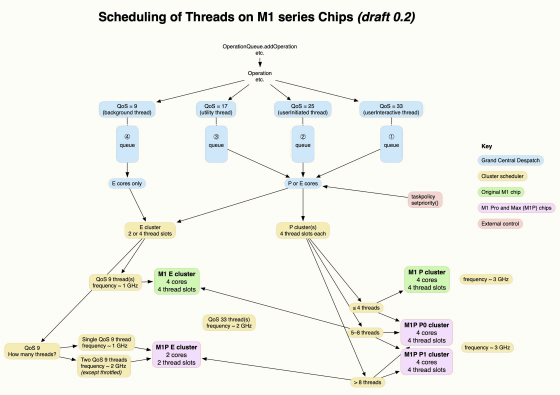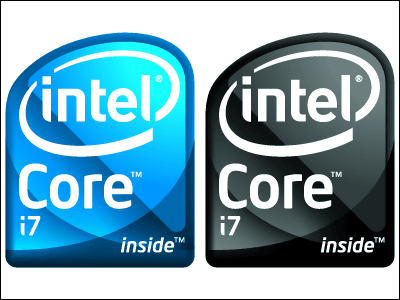What is the mechanism by which macOS achieves both calculation processing performance and power saving performance on M1 series-equipped terminals?

The SoC 'M1 series' developed by Apple is installed in Apple devices such as MacBook series, iMac, and iPad, and is highly evaluated because it has both calculation processing performance and power saving performance. The Eclectic Light Company, a site that handles a lot of Apple-related information, explains the mechanism of processing allocation of such M1 series.
How macOS manages M1 CPU cores – The Eclectic Light Company
The figure below shows the CPU usage rate when the calculation process is executed on a machine equipped with the Intel CPU 'Intel Xeon W', the vertical axis shows the CPU usage rate, and the horizontal axis shows the time. Looking at the figure, we can see that all 16 cores, including virtual cores, are used to the same extent.

On the other hand, when processing is executed on a machine equipped with an M1 chip, the CPU usage rate differs for each core. The M1 series is equipped with two types of CPU cores, the CPU core 'Firestorm' that emphasizes calculation performance and the CPU core 'Icestorm' that emphasizes power saving performance, and calculation processing is assigned to each core according to the processing content. It has been done.

Computational assignments are managed by macOS and you cannot specify the core used by software developers. macOS refers to the
Low QoS is set for background processes such as the optimization process of the backup function 'Time Machine' and the search function 'Spotlight' of macOS. For this reason, many of the background processes run on the Icestorm core, resulting in power-saving operation. On the other hand, the Icestorm core has lower calculation processing performance than the Firestorm core, so you may be worried about the slowness of operation.
Some macOS processes focus on the Firestorm core. The CPU usage when macOS is executing the 'process to prepare for OS update' is as follows. You can see that one Firestorm core (Core 3) continues to be used nearly 100%.

The 'flow chart until macOS allocates calculation processing to each core based on QoS' compiled by The Eclectic Light Company looks like this. The flowchart lacks information on the '

Related Posts:






